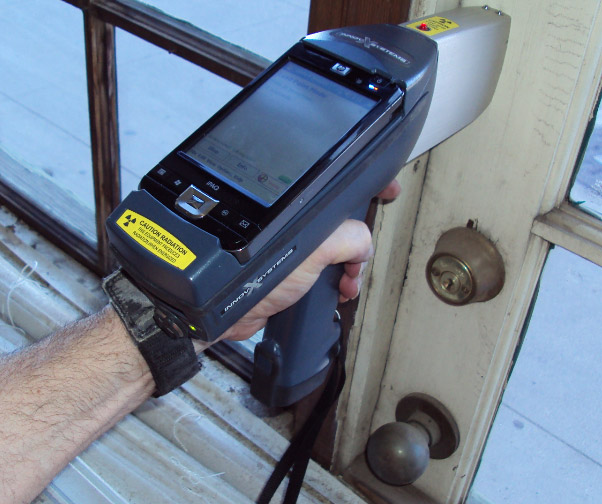NYC Lead Removal Contractors-- Obtain Safe and Efficient Solutions
NYC Lead Removal Contractors-- Obtain Safe and Efficient Solutions
Blog Article
Comprehensive Guide on Effective Lead Infraction Elimination Methods
In the realm of ecological safety, resolving lead infractions demands a thorough and organized method. This detailed guide begins by highlighting the essential initial actions of determining lead risks through advanced analysis and testing techniques. The overview clarifies on the significance of sticking to strict security methods throughout the removal procedure, including the use of proper PPE and separating influenced locations.
Recognizing Lead Hazards
Recognizing lead hazards is a crucial initial step in reducing the risks related to lead exposure. Lead, a harmful steel, can be present in different environmental mediums, consisting of paint, soil, water, and dirt. It positions severe wellness threats, specifically to youngsters and expecting women, resulting in neurological damage and developmental delays. Precise identification of prospective lead sources is necessary for reliable remediation.
The preliminary stage in recognizing lead hazards includes recognizing common lead resources within the built atmosphere. Structures developed prior to 1978 are specifically prone as a result of the prevalent use lead-based paint throughout that period. In addition, dirt contamination can happen from deteriorating outside paint, industrial emissions, or historical use leaded gas.
One more significant source is lead piping and plumbing components, which can leach lead into alcohol consumption water. Consumer goods such as playthings, ceramics, and imported products might additionally contain unsafe lead degrees. Especially, work settings and hobbies including lead can track impurities into homes.
Evaluation and Testing
When resolving lead threats, effective assessment and testing are extremely important. This important action makes sure the recognition and metrology of lead presence, consequently directing succeeding removal initiatives. Preliminary evaluation normally involves a visual assessment to recognize possible lead resources, such as wearing away paint or polluted dirt. This is enhanced by even more strenuous screening approaches to ascertain the level of contamination.

Dust wipe tasting is one more crucial technique, particularly in residential settings. By gathering examples from floors, windowsills, and other surface areas, this method supplies understandings into possible exposure dangers. Dirt testing around structure boundaries is necessary to find lead contamination that could position threats, particularly to youngsters.
Safe Removal Treatments
Upon finishing comprehensive assessment and screening, implementing secure elimination procedures is the next critical stage in Visit This Link dealing with lead hazards. This procedure makes certain that lead-contaminated products are properly and securely eradicated, reducing danger to both employees and homeowners. The primary step includes separating the affected area using plastic sheet and proper sealing strategies to avoid the spread of lead dirt.
Workers need to wear proper individual protective devices (PPE), consisting of respirators, handwear covers, and non reusable coveralls, to mitigate direct exposure. Using specialized devices and damp approaches, such as wet fining sand or utilizing HEPA-filtered vacuums, decreases the dispersion of lead bits. It is critical to prevent dry fining why not try this out sand or rough blasting, as these approaches can create harmful lead dirt.
Waste disposal is another important part; all polluted products need to be safely nabbed and labeled according to EPA and neighborhood laws. Furthermore, detailed cleaning of the job location with HEPA vacuum cleaners and wet cleaning makes certain the elimination of recurring lead fragments.
Post-Removal Verification

Confirmation of successful lead elimination, called post-removal confirmation, is essential to guarantee the security and habitability of the remediated location. This procedure includes a collection of careful evaluations and examinations made to identify any kind of recurring lead bits that might posture health threats. The first action typically consists of a visual assessment to evaluate the completion and quality of the remediation work. This examination makes certain that all recognized resources of lead have actually been addressed and that no visible signs of contamination stay.
Adhering to the aesthetic evaluation, environmental sampling is performed. This includes accumulating dust, dirt, and in some cases water samples from the remediated area. Recognized labs analyze these examples to gauge lead levels, ensuring they drop below the security thresholds developed by governing bodies such as the Environmental Defense Company (EPA)
Furthermore, air quality testing might be done to discover air-borne lead fragments, specifically in cases where considerable lead-based paint elimination or remodelling has actually taken place. The results of these tests give quantitative data verifying that the lead degrees are within acceptable their explanation limitations.
Inevitably, post-removal verification acts as an important checkpoint, confirming the effectiveness of the lead abatement efforts and guarding the health of residents and site visitors.
Preventive Steps and Upkeep

A key precautionary procedure consists of using lead-safe licensed service providers for any improvement, fixing, or painting activities. These experts are learnt practices that reduce lead dust and debris. Additionally, maintaining painted surfaces to prevent cracking or peeling is necessary, as wearing away paint can release lead bits right into the environment.
Educational efforts targeting building owners and renters concerning the risks of lead and the importance of reporting any kind of prospective hazards can further improve preventative initiatives. Regular cleansing making use of HEPA vacuum cleaners and wet wiping techniques can dramatically reduce lead dirt accumulation.
Conclusion
In recap, reliable lead infraction elimination necessitates a careful method encompassing extensive evaluation, specific screening, and strict elimination procedures. Ongoing inspections and upkeep are necessary to reduce future lead threats, thus guarding public health and making certain sustained compliance with regulative needs.
Report this page